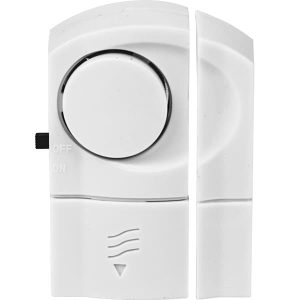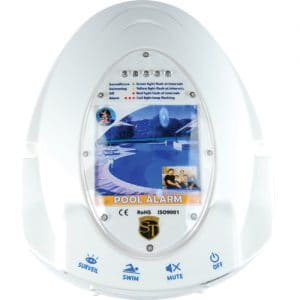
free shipping on orders over $50
We're having a sale on all our products. Enter your email below to be notified about future sales.



Showing all 6 results






Securing your sanctuary with a DIY home alarm system seems smart, simple, and cost-effective.
But before you decide, it’s critical to weigh factors such as monitoring services, compatibility with smart home devices, and the total cost over time. As you sift through the sea of sensors and systems, remember that the right choice can offer not only peace of mind but also a tailored fit for your home’s unique needs.
What considerations should you prioritize to make sure your home’s security doesn’t fall short?
When choosing a DIY home alarm, offers a range of features to meet different security needs and preferences.
For those of you on a budget, it’s known for its affordability without compromising on quality. It’s a go-to for cost-effective home security.
Smart home enthusiasts, its extensive smart-home integration capabilities make it the perfect match for a seamlessly connected home. Think of controlling your security systems, cameras, alarms, and sensors all integrated with your existing smart home devices.
Thus, if you’re after simplicity and affordability, that it offers easy use, compatibility with Amazon Alexa and more camera add-ons than other picks, making it an ideal choice for enhancing your home’s security with minimal fuss.
Installing your DIY home alarm system is simpler than you might think, often taking just a few minutes to get everything up and running. With DIY home alarm systems, you’re not only saving time and money but also enjoying a hassle-free process that you can manage on your schedule. Thanks to easy installation instructions and wireless technology, setting up your system is straightforward.
Here are a few steps to guarantee a quick setup:
Place Sensors on Doors and Windows: These are your first line of defense. Using the peel-and-stick adhesive, attach the sensors securely to all main entry points.
Test Your System: Once everything is in place, test the system to guarantee all components are working correctly.
Considering the benefits and drawbacks of DIY home alarms is essential before making your choice. DIY security systems have surged in popularity due to their cost-effectiveness and user-friendly design. They offer an appealing blend of affordability and convenience, particularly for homeowners who enjoy a hands-on approach to their home’s security.
Here’s a quick rundown of what you need to know:
Affordability and Convenience: DIY systems generally offer affordable monitoring options and are easy to install, often coming with clear, step-by-step instructions. This makes them accessible even if you’re not particularly tech-savvy.
Flexibility in Customization: You can customize sensors and devices to fit your specific needs, and it’s easy to expand the system as your requirements or budget changes. This flexibility guarantees your home’s security can grow with you.
Smart Home Integrations: Many DIY systems seamlessly integrate with smart home technologies, enhancing your home’s overall security and convenience.
Potential Limitations: While they’re cost-effective and flexible, DIY alarms might lack some of the advanced features or integrations found in professionally installed systems, which could be a drawback depending on your security needs.
Having explored the pros and cons of DIY home alarms, we’ll now offer some security tips to maximize your system’s effectiveness. First off, place motion sensors at key entry points. These devices are essential for detecting movement and can quickly trigger alarms if there’s an intruder. Additionally, installing window and door sensors will help you monitor for unauthorized access, sending you alerts if someone tries to break in.
Don’t overlook the importance of glass break sensors. These can add an extra layer of security against forced entry, ensuring you’re notified the moment a window is smashed. For a more thorough approach, consider integrating your DIY system with smart home technology. This allows you to receive real-time alerts and monitor your home remotely, giving you peace of mind wherever you are.
Yes, you can build your own home security system with motion sensors, door alerts, and video surveillance for intrusion detection. Include smart locks, security lighting, and panic buttons for thorough safety and remote monitoring.
To build a simple alarm, you’ll need to grasp circuit basics, choose the right sensor types, and consider power sources. Confirm it’s loud enough, strategically placed for entry detection, and includes remote alerts. Regularly test and maintain it.
Yes, you can install a house alarm yourself, choosing between wireless or wired options. Consider equipment selection, smart integration, and potential DIY pitfalls. Remember to check for alarm permits, legal considerations, and think about professional monitoring.
You’ve got options beyond traditional alarms. Consider smart locks, motion sensors, surveillance cameras, and window sensors. Door reinforcements, personal safety apps, outdoor lighting, security signs, neighborhood watch, and glass break detectors also boost your home’s security.
Virtuous Protection
15900 W. 10 mile Rd.
Suite 211-1397
Southfield, MI 48075
Call us toll free: (800) 897-0194
